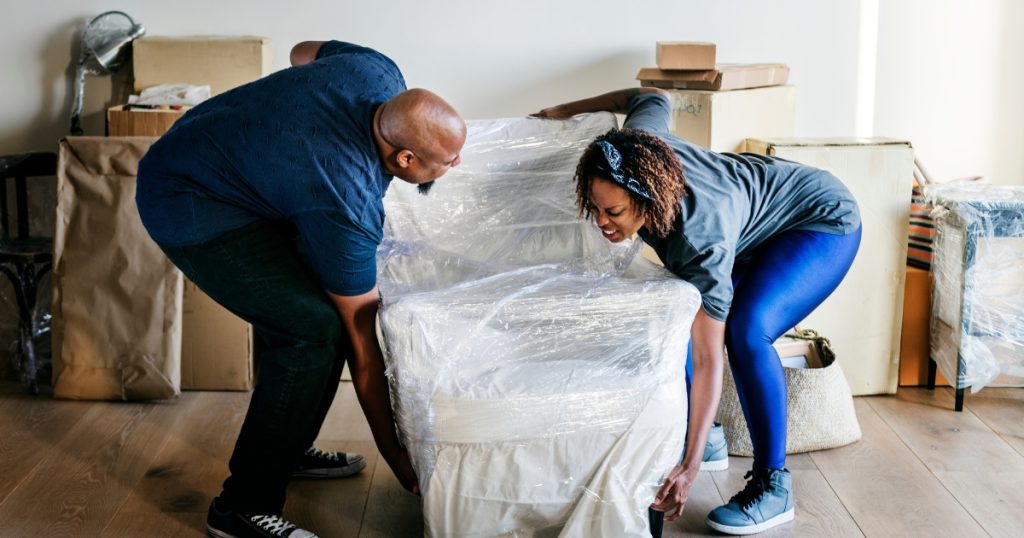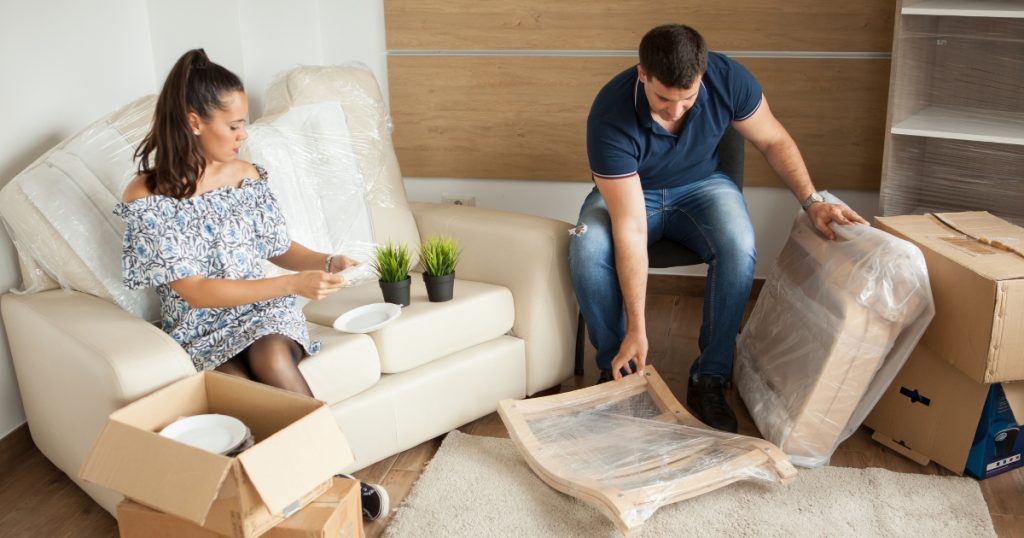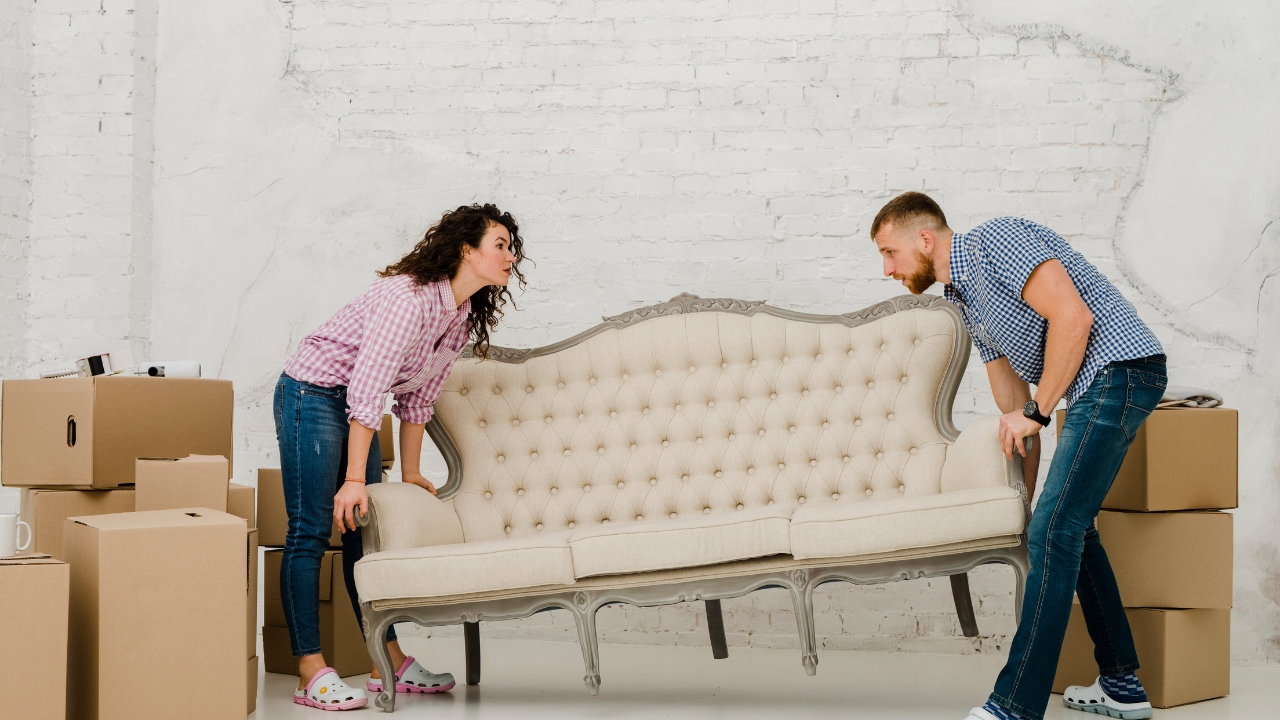Find out how to disassemble furniture for a move in this practical guide. From unscrewing to safely packing to reassembling your furniture so it’s enjoying a new life, as are you, in your fabulous new apartment, just Scroll down for expert advice and many easy-to-follow steps.
Thank you for reading this post, don't forget to subscribe!Introduction
Things you should know about Moving: Moving to a new place is exciting and challenging. Moving large furniture is one of the hardest aspects for most people. These things can be somewhat difficult to transport if you are unable to take them apart. Furniture disassembly is so important to transporting furniture properly and making more space in the moving truck so items don’t rub against one another. This decreases the number of items that get scuffed and reduces the effort on your end!
In this post, we’ll show you how to break down furniture for moving, one piece at a time. So whether it’s beds, bookshelves, tables, or more complex orders consisting of items such as wardrobes or sofas that you’re dealing with, we’ll take you through exactly what you need to be doing to get those items taken to pieces with minimal fuss. Let’s get started!

Why Should You Disassemble Furniture for a Move?
Before we start on the “how-to,” let’s discuss why disassembling furniture is important. The main benefits include:
- Space Saving: Disassembling big furniture makes it more readily fit into your moving truck, thereby utilizing space effectively and avoiding scratches on other stuff.
- Travel convenience: smaller and lighter components are convenient to carry and do not cause potential safety hazards due to fatigue or injury.
- Damage Prevention: If you try to move large, heavy, or unwieldy furniture as a whole, you may encounter scratches, dents, or breakage. Taking the set apart will allow the pieces to be easier to carry and prevent damage.
- Economical: If you disassemble your furniture, you can hopefully reduce the number of people you need to move, saving you some cash.
Having discussed why you should take apart furniture, we can now discuss how best to do it.
How to Disassemble Furniture for a Move
Gather the Right Tools
Before you start, you’ll want to ensure you have all the tools ready. Depending on the kind of furniture, you might need several tools, such as:
- Screwdrivers (flat and Phillips) – – All different size screws.
- Allen wrenches –You will need hex keys for some furniture, especially modern furniture.
- Wrenches – Needed for nuts and bolts.
- Pliers – For holding or turning troublesome screws or bolts.
- Measuring tape – For furniture measurements, ensure it goes through doors or fits in the moving truck.
- Plastic bags/boxes – To store screws, nuts, and other small parts.
- Marker or label tape – Used to mark out parts for reassembling back together.
Begin with the Easy Pieces First
On the other hand, room-scale pieces of furniture might make more sense to start with more straightforward things, like coffee tables, end tables, or dining chairs. These tend to be simpler and easier to take apart. Here’s how to approach them:
- Tables: If the legs can be removed, unscrew them from the tabletop. Put all screws in a plastic bag with label instruction.d (for example, “Dining Table Legs”).
- Chairs: Most chairs can be dismantled simply by screwing the legs off of the rest of the chair. And again, use a bag to keep the screws and label the bag to make finding them later a snap.
Disassemble Beds
Beds can also be challenging as they come in many styles, some of which may need to be disassembled differently. Here’s how to take a bed apart for moving:
- Remove the mattress and box spring: Remove the mattress and box spring, leaving room for dismantling the frame.
- Bed Frame: Unscrew (or remove bolts) to disconnect the bed frame parts using a screwdriver or wrench. Most bed frames have a headboard, footboard, and side rails. To the extent possible, label each piece as you remove it to simplify reassembly.
- Slats and Support Pieces: Remove all slats and unfasten the support pieces located in the middle of the bed. Be careful with these fragile pieces.
Disassemble Sofas and Couches
Sofas and settees are usually the trickiest furniture items to combine. Not all sofas are made to be taken apart, but today, many are made this way for easy transport.
- Remove the Legs: A lot of sofas have legs that screw in. 4 Unscrew or unbolt the legs and store them in a labeled bag.
- Disassemble the Frame or Base (If Dismantlable): If the sofa comes with a dismantleable base or frame, dismantle it by unscrewing the needed parts. Because those nuts, screws, and bolts can be hard to replace, and you don’t want to lose them!

Unassemble Bookcases, Desks, and Cabinets
Bookcases, desks , and dressers are furniture that must have to be taken apart before moving. For the most part, these items are put together with screws or nails and can be broken down fairly easily.
- Shelving Units: 80- Remove shelves from inside the shelving unit to begin. Unscrew the brackets that connect the sides and back together. Note the location of each shelf and mark it to simplify reassembly.
- Desks and Cabinets: To prepare a desk, remove any drawers and unscrew any pieces joining the desk’s top and bottom and vice versa. Unscrew the shelves for cabinets and, if applicable, remove any glass panels.
Prepare and Label Your Furniture Elements
Once you’ve disassembled your furniture, you will want to pack and tidy the parts. Here are a few ways to make this step easier:
- Bag Small Parts: Sort screws, bolts, and nuts into separate small baggies and label them with the piece of furniture they belong to (“Sofa Legs,” “Dining Table Screws”).
- Label Furniture Parts: Label large furniture parts with painter’s tape or a marker. For example, you might mark the legs of a table or the back of a chair to help the pieces be put back together faster.
- Protect Fragile Parts: Use bubble wrap or moving blankets to wrap fragile parts like glass panels to prevent them from breaking while you’re moving.
Transporting and Reconstructing at the New House
Now that your furniture is disassembled, packed, and labeled, it is time to move it into your truck. Be sure to stack heavier items on the bottom and distribute the weight evenly to prevent it from shifting while it’s on the move.
As soon as you get to your new place, it is time to reassemble everything. The trick here is to spend time and follow the guide you have written for each part. Follow manuals or installation guides if needed. When you know you put it all away neatly, reassembling your furniture will be a cakewalk.
Some tips to aid in your Furniture: Take Away ease of collection and dis-assembly
- Take Photos: If you’re concerned about the reassembly of the item, take photos of the furniture before you disassemble it. That way, you’ll have a record of what goes where when it’s time to reassemble the whole thing.
- Don’t Force Anything: Don’t force things if you’re having trouble getting a screw or bolt off. Use the right tool or a little lube (like WD-40) to free it.
- Begin Breaking Down Furniture: Take down any easy-to-remove furniture components, so you’re not left scrambling with too much to do the night before packing day.

FAQs on Breaking Down Furniture for a Move
Why do I see furniture disassembled before moving?
The fewer the parts, the less space you waste, the less likely you are to cause damage, and the less confusing it will be in transit. It also helps aid the moving process, particularly when products are bulky, heavy, or large.
Equipment Needed What will I need to take apart my furniture?
You may use common tools — screwdrivers (one each flathead and Phillips), Allen wrenches, wrenches, pliers, and a tape measure — to disassemble the furniture, plus plastic bags for small parts and labels or tape to mark pieces.
How can I not lose screws and bolts when I take apart furniture?
For the screws, the bolts, and all the small parts, use zip-lock bags and name each bag after the piece of furniture. It will be easier to keep up with everything for reassembly later on.
Am I allowed to dismantle all the furniture?
The majority of furniture, including tables, beds, bookcases , and chairs, is disassemblable. However, some pieces, such as an extra-large sectional sofa or custom-designed furniture, might not be made to detach easily. Look for instructions or manuals before you start taking it apart.
How do I take apart a bed to move it?
1. Remove the mattress and box spring, for starters. Next, unscrew or unbolt the frame from the headboard, footboard, and side rails. Mark each piece so that it is easy to assemble.
Should I take apart my sofa or couch?
Most modern sofas are designed for easy disassembly. Remove cushions, unscrew or unbolt the legs and frame using an Allen wrench or screwdriver. Additional disassembly may be required on certain sofas. When in doubt, refer to the manufacturer’s manual.
How can I deal with delicate furniture such as glass tables or cabinets?
Wrap the glass to protect them while moving; use bubble wrap or moving blankets. For furniture made of glass, ensure you safely wrap the glass panels. You can also empty the shelves of cabinets and wrap them tightly. Handle these carefully, as they are prone to breakage.
How long does it take to disassemble a furniture?
It depends on the furniture and how long (or not) it will take to take it apart. Smaller pieces can take as little as 10-20 minutes to assemble, while larger or more complicated pieces (think wardrobes or sectional sofas) may take a couple of hours.
Do I need to take furniture apart before or after I pack everything?
Disassembling furniture is best done several days before moving. This will allow you time to pack the pieces correctly and will help you avoid being stuck at the last second trying to take apart large or cumbersome items.
How should I safely assemble my furniture after moving?
When it’s time to put the furniture back together, use the labeled bags or containers to separate screws and bolts. Follow the initial assembly instructions, and don’t forget to verify that all parts are installed correctly. Just take your time and be careful not to break the pieces.
These FAQs should provide useful information for someone who wants to disassemble furniture when moving. Learn from the most frequently asked questions to help you plan a better and safer move!
Conclusion
Deconstructing furniture for your move can help protect your property when in transit and will ensure nothing gets damaged. The hacks and techniques can save time, prevent damage, and make the moving day less painful. With some preparation and the right tools, you’ll have your furniture out the door and into storage in no time. Happy moving!
